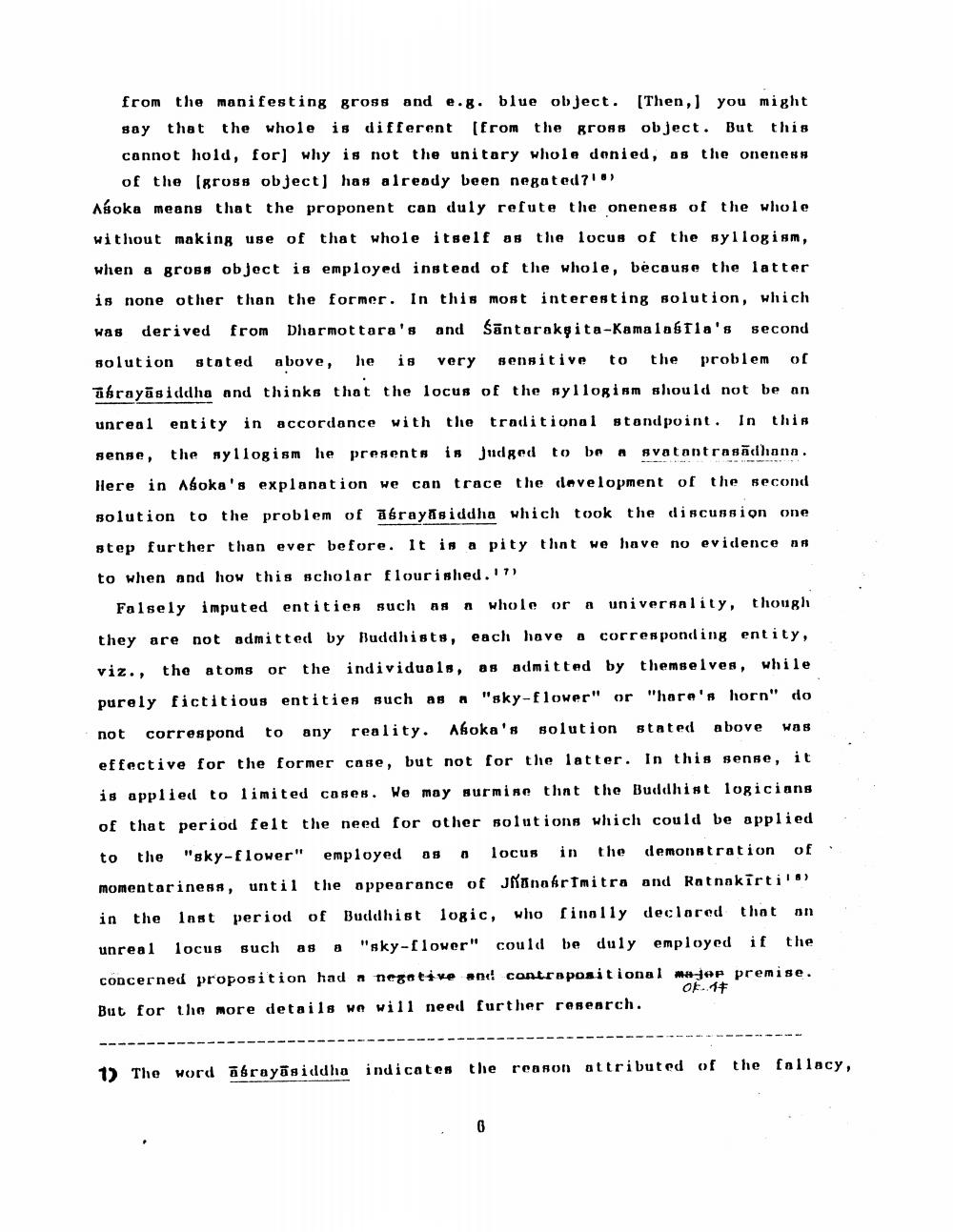________________
from the manifesting gross and e.g. blue object. [Then,] you might say that the whole is different [from the gross object. But this cannot hold, for] why is not the unitary whole denied, as the oneness of the gross object] has already been negated?!")
Asoka means that the proponent can duly refute the oneness of the whole without making use of that whole itself as the locus of the syllogism, when a gross object is employed instead of the whole, because the latter is none other than the former. In this most interesting solution, which was derived from Dharmottara's and Santarakşita-Kamalasfla's second solution stated above, he is very sensitive to the problem of abray siddha and thinks that the locus of the syllogism should not be an unreal entity in accordance with the traditional standpoint. In this sense, the syllogism he presents is judged to be a svatantrasādhana. Here in Asoka's explanation we can trace the development of the second solution to the problem of asray siddha which took the discussion one step further than ever before. It is a pity that we have no evidence na to when and how this scholar flourished. 17)
whole or Falsely imputed entities such as a a universality, though they are not admitted by Buddhists, each have a corresponding entity, viz., the atoms or the individuals, as admitted by themselves, while purely fictitious entities such as a "sky-flower" or "hare's horn" do not correspond to any reality. Asoka's solution stated above effective for the former case, but not for the latter. In this sense, it is applied to limited cases. We may surmise that the Buddhist logicians of that period felt the need for other solutions which could be applied to the "sky-flower" employed a8 0 locus in the demonstration of momentariness, until the appearance of JanarTmitra and Ratnakīrti!") in the last period of Buddhist logic, who finally declared that an unreal locus such as a "sky-flower" could be duly employed if the concerned proposition had a negative and contrapositional major premise. OF.14 But for the more details we will need further research.
was
1) The word asrayasiddha indicates the reason attributed of the fallacy,
6




